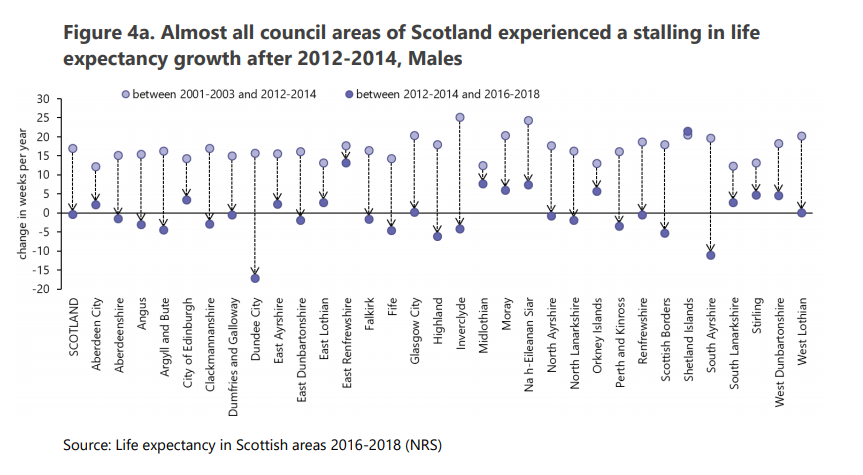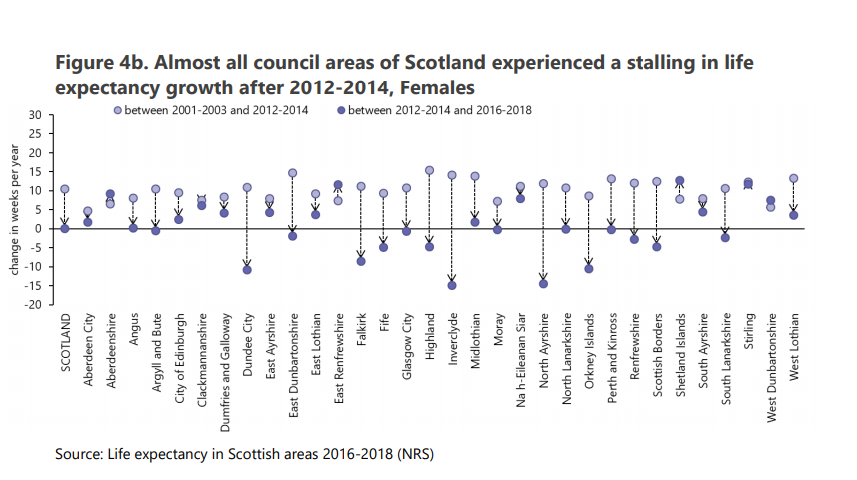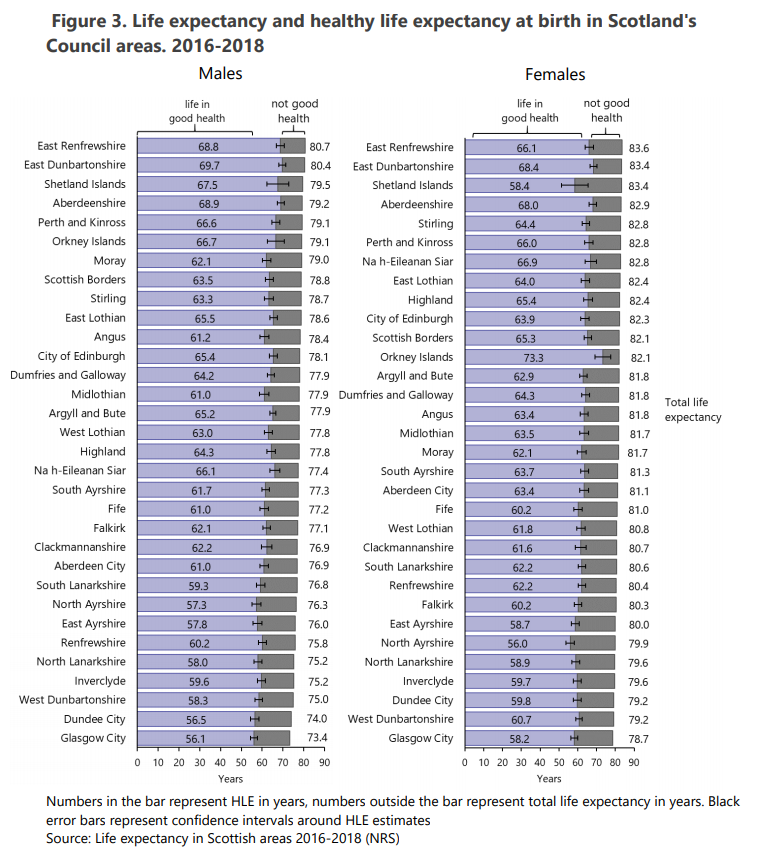Life expectancy falls across many parts of Scotland
Inequality is also getting worse, with those living in the least deprived areas living significantly longer and healthier lives than those in more deprived areas
Life expectancy in many of Scotland’s council areas is now falling, according to newly published figures.
Statistics from National Records of Scotland (NRS) shows that life expectancy is decreasing in 17 of Scotland’s 32 council areas for men and in 12 for women.
Inequality is also getting worse, with those living in the least deprived areas living significantly longer and healthier lives than those in more deprived areas.
The overall life expectancy in Scotland in the NRS report for 2016-18 is found to be 77 years for men and 81.1 for women.
These figures have remained broadly the same since the 2012-14 report was released, as Scotland’s life expectancy growth stalled.
But this newest report has found that life expectancy has not only stalled in almost all areas of Scotland, but that it is decreasing in many.
Some council areas, like Dundee and Inverclyde, have seen life expectancy decrease “dramatically” since 2012-14.
Dundee has the fastest falling life expectancy for men and Inverclyde for women, with a negative growth rate of over 15 weeks per year each.
This means a baby born between 2016 and 2018 in these areas is expected to live at least 15 weeks less than one born in previous years.


Other councils with decreasing life expectancy for both men and women include East Dunbartonshire, Falkirk, Fife, Highland, North Lanarkshire, North Ayrshire, Perth and Kinross, Scottish Borders.
NRS reports use a rolling three year average when calculating these figures.
Areas with higher life expectancy also had a higher healthy life expectancy, meaning the number of years spent in good health.
The gap between people in the most and least deprived areas has been growing for both life expectancy and healthy life expectancy.
The NRS describes a “big gap in life expectancy between the most and least deprived areas” with men in deprived areas are found to live 13.1 years less than those in the least deprived areas, while for women the difference is 9.8 years.
This compares with 13 and 9.6 in the previous NRS report.
For healthy life expectancy the difference between most and least deprived is even greater, at 23 years for men and 23.9 years for women.
This means that people born in the least deprived areas live both significantly longer and healthier lives.

The council area with the highest life expectancy is East Renfrewshire, at 80.7 years for men and 83.6 for women.
The council area with the lowest life expectancy is Glasgow City, at 73.4 for men and 78.7 for women.
Paul Lowe, the chief executive of National Records of Scotland and Registrar General for Scotland, said: “The new figures show that the stall in life expectancy growth which we have seen for Scotland as a whole is happening in almost all areas across Scotland.
“However, the rate of change varies amongst council areas with some slowing more than others and some showing falling life expectancy.
“The figures also continue to show that those living in less deprived areas are expected to live longer, healthier lives than those in more deprived areas.”
Holyrood Newsletters
Holyrood provides comprehensive coverage of Scottish politics, offering award-winning reporting and analysis: Subscribe